A built-up roof, or BUR, is a popular choice for flat or low-slope commercial roofs. This type of roofing system is constructed with multiple layers of bitumen and ply sheets, alternating between layers of hot asphalt or coal tar and roofing felts or other reinforcing materials. The roofing material is topped with a sealed surface of gravel or mineral granules to provide protection from ultra-violet light and added energy efficiency to the building. In this article, we will delve into the details of what a built-up roof is, how it works, and why it is a great option for commercial properties.
Disclaimer: The information provided in this article is for informational purposes only and is not intended as professional advice. It does not replace the need for professional services provided by a qualified commercial roofing contractor. Any reader should consult with a qualified contractor before making any decisions about their built-up roof system. For further advice and consultation, we recommend contacting Advance Roofing LLC at https://advanceroofingllc.com/. For many years, we have been proudly providing the Spokane, WA area with top-notch roofing solutions and expert customer service.
Benefits of a Built-Up Roof
A built-up roof (BUR) is a popular choice for commercial properties due to its many benefits.
One of the main advantages of BUR is its exceptional waterproofing protection. BUR systems are comprised of multiple layers of roofing material, typically including layers of bitumen and hot asphalt, and ply sheets. These materials work together to form a sealed surface over the roof deck, providing excellent protection against water damage.
Another key benefit of BUR is its low-maintenance nature. Once installed, BUR requires minimal upkeep, making it a cost-effective option for commercial buildings. Additionally, BUR is highly impact resistant, providing added protection against damage from hail and other debris. It is also highly fire resistant, which is a crucial consideration for commercial properties.
In addition to its excellent waterproofing, BURs also offer exceptional UV protection. The multiple layers of protection in BUR systems create a continuous sealed surface that reflects harmful UV radiations from the sun’s rays, ensuring the roof surface stays cool and energy-efficient.
For properties with foot traffic, BUR is an ideal choice due to its ability to handle continuous use. However, proper installation is crucial to ensuring the longevity and effectiveness of the roof. A professional roofing contractor should always be enlisted to ensure installation is done correctly.
In summary, BURs offer numerous benefits including waterproofing protection, low maintenance, impact resistance, fire resistance, and exceptional UV protection. When properly installed and maintained, BURs provide long-lasting protection and energy efficiency for commercial properties.

Components of a Built-Up Roof
Built-up roofs offer a reliable solution for businesses looking for durable, long-lasting protection for their properties. They are constructed using multiple layers of roofing material, including a base layer, ply sheets, and a surface layer. In this part ofarticle, we’ll discuss the components of a built-up roof and how they contribute to its overall performance and durability.
Bitumen
Bitumen is the essential component in a Built-Up Roof (BUR) system, which is a popular roofing option for flat or low-slope commercial buildings. BURs consist of several layers of roofing felts or ply sheets, each coated with bitumen and then overlapped to create a sealed surface on the roof deck. The purpose of bitumen is to provide a waterproof layer
that protects the underlying roof substrate from water damage.
There are three common types of bitumen that are used in BUR systems: asphalt, coal tar, and cold-applied adhesive.
Asphalt is the most widely used type of bitumen. It is a petroleum-based product that has good tensile strength and can withstand high temperatures.
Coal tar, on the other hand, is made from coal and has superior resistance to ultra-violet (UV) radiation, making it a great option for commercial properties located in areas with intense sunlight.
Finally, cold-applied adhesive is a more recent development that does not require heating and can be applied with a brush or a roller, making it easier to use and more energy-efficient.
Each type of bitumen has its own strengths and weaknesses.
For example, asphalt is known for its affordability and ease of installation, but it does not provide good UV protection and may not be as suitable for high-traffic areas.
Coal tar is also durable and long-lasting but may be more expensive and difficult to install.
Cold-applied adhesive is the most environmentally-friendly and has low installation costs, but it may not be as durable as other types of bitumen.
The process of installing a BUR system with bitumen involves heating the material to a specific temperature range, between 370 and 450 degrees Fahrenheit, to ensure optimal fluidity. The heated bitumen is then applied to the roofing felts or ply sheets in a series of layers, each one slightly thicker than the previous one. The goal is to create a thick, solid layer of protection that is resistant to water and other environmental factors.
In conclusion, bitumen plays a critical role in the construction and maintenance of a Built Up Roof system. Understanding the different types of bitumen and their respective advantages and disadvantages is essential when designing a roofing system that is well suited to the specific needs of a commercial property. Proper installation and maintenance of the bitumen coating are crucial to ensuring that the roof is secure and offers long-lasting protection.
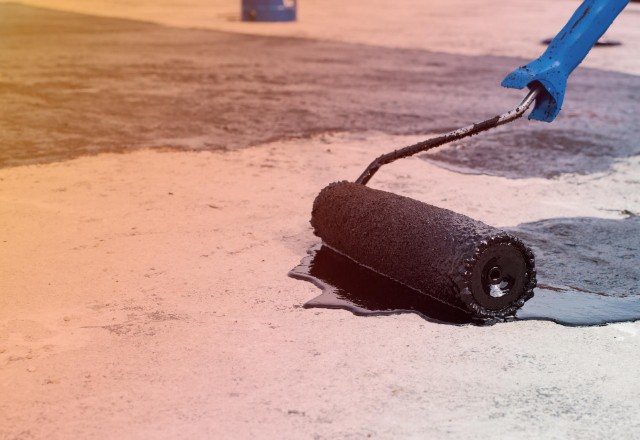
Ply Sheets
Ply Sheets play a crucial role in a built-up roof system as they serve as the structural base for the multiple layers of bitumen and protection layers that make up the roof. These sheets are typically made of fiberglass or polyester and can range in thickness from 2 to 5-ply sheets, depending on the requirement of the roof substrate.
The purpose of ply sheets is to add strength to the roof and create a base layer for the additional roofing materials to adhere to. The thickness and material of the ply sheets are crucial in providing adequate protection against weather and environmental factors.
Fiberglass ply sheets are the most commonly used due to their durability, low cost, and resistance to moisture. Polyester ply sheets are used in situations where the roof may be exposed to chemicals or high levels of heat. It is important to choose the right thickness and material for the specific roof substrate and location to ensure long-lasting protection.
In conclusion, ply sheets are an important component of a built-up roof system that is responsible for providing structural support and strength to the roof. Proper selection of material and thickness of ply sheets will contribute to the overall energy efficiency and effectiveness of the roofing system.

Gravel or Mineral Surfacing
Gravel or mineral surfacing is an essential component of built-up roofing systems (BURs) that is designed to protect the layers of the roof from weathering and solar radiation. Without proper protection, the layers of Bitumen and Ply Sheets of a BUR can easily deteriorate due to exposure to the elements.
There are different types of surfacing materials available, including aggregate stones, slag, granite chips, or mineral granules. The choice of surfacing material depends on the specific roofing needs and the location of the building.
The primary purpose of using gravel or mineral surfacing is to safeguard the layers of a BUR from deteriorating due to exposure to the elements. These materials provide a layer of protection against harsh climates, ultraviolet rays, and heavy foot traffic. By providing an additional layer of insulation, gravel or mineral surfacing also helps to make a building more energy-efficient.
Another significant benefit of using gravel or mineral surfacing is that it increases the fire resistance of a built-up roof system. The surfacing materials act as a barrier against flames and prevent them from reaching the underlying layers of the roof.
In addition, gravel or mineral surfacing provides excellent longevity and durability, extending the lifespan of a built-up roof system. Routine inspections and minimal upkeep are all that is needed to keep gravel or mineral surfacing in great condition and maintain its protective properties.
In summary, the use of gravel or mineral surfacing is an essential part of protecting built up roof systems from the elements. It provides an extra layer of protection that improves fire resistance, energy efficiency, and the lifespan of the roofing system. Building owners should choose the appropriate surfacing material according to their specific roofing needs and the location of their building.
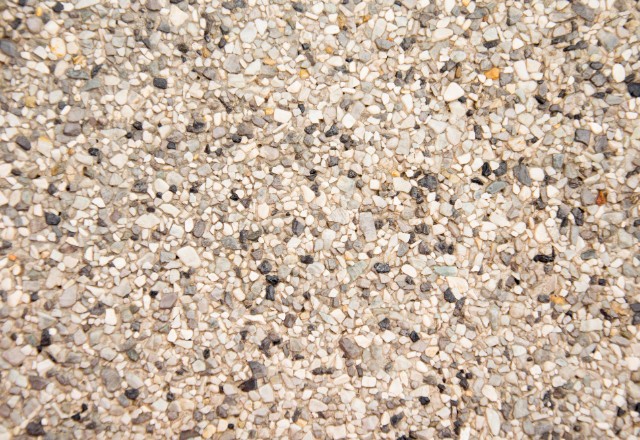
Base Sheet
The Base Sheet is an essential component of a Built-Up Roof System, providing an additional layer of protection for the roof. Its purpose is to create a flat surface on which the other layers of asphalt and ply sheets can be applied. The Base Sheet is typically a lightweight, built-up composite that is designed to withstand harsh weather conditions and offer extra durability to the roof.
The composition of the Base Sheet is critical in ensuring the longevity of the roof. It is made up of multiple layers of fiberglass or organic felts, coated with asphalt, and reinforced with additional layers of fiberglass matting. The composition ensures its ability to resist water, making it an excellent choice for flat roofs or low-slope structures.
The Base Sheet is an integral part of a Built-Up Roof System and helps protect against various damaging elements such as moisture and UV rays. With its sturdy composition, the Base Sheet offers additional resistance to wear and tear, ensuring the longevity of the entire roof. A Built-Up Roof System has several layers of protection, and the Base Sheet is a significant contributor to its success.
In conclusion, the Base Sheet plays a crucial role in ensuring the effectiveness and longevity of a Built-Up Roof System. Its composition provides an extra layer of protection, a flat surface, and the necessary durability that a roof requires. With its ability to resist water and withstand harsh weather conditions, the Base Sheet is an essential ingredient in the recipe for a robust and long-lasting roof.
Ultra-Violet Protection Layer
An essential component of a built-up roofing system is the ultra-violet (UV) protection layer. This layer acts as a shield for the roofing material against UV rays that can break down the roof’s surface, leading to water damage and increased energy consumption.
The reflective coating applied to the top layer of the built-up roof plays a crucial role in protecting it against UV rays. The coating reflects the sunlight, preventing heat buildup and reducing the amount of energy required to cool the building. This results in significant savings on energy bills.
Furthermore, the ultra-violet protection layer provides additional insulation, thus preventing the roof sheathing from getting wet. This, in turn, ensures that the building remains properly insulated, leading to further energy savings.
The ultraviolet protection layer has several critical features that ensure its effectiveness.
High tensile strength is crucial in preventing the layer from breaking down over time, which can lead to water damage.
Low air and vapor permeability ensures that air cannot escape or enter the roof, contributing to its insulation capabilities.
A nonslip top surface is also an essential feature of the UV protection layer, preventing accidents during routine inspections and maintenance.
To construct the ultra-violet protection layer, a tri-laminate woven polyethylene, self sealing SBS rubber, and an asphalt blend are used.
The tri-laminate woven polyethylene forms a barrier against moisture, preventing water from penetrating the roof.
The self-sealing SBS rubber provides adhesive properties that ensure the layers remain securely fastened.
The asphalt blend is used to provide additional waterproofing and weather resistance.
Finally, a split-back silicone release film is used to protect the adhesive property of the SBS rubber until installation, ensuring it remains in optimal condition.
An ultra-violet protection layer is a critical component of a built-up roofing system. It protects the roofing material against UV rays, reduces energy consumption and costs, and provides additional insulation. The use of high tensile strength, low air permeability, and a nonslip top surface combined with materials such as tri-laminate woven polyethylene, self-sealing SBS rubber, asphalt blend, and split-back silicone release film ensures that a built-up roof’s ultraviolet protection layer provides long-lasting protection.
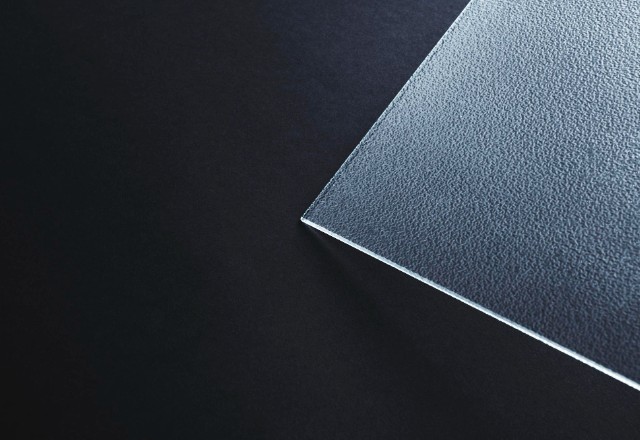
Installation of a Built-Up Roof System
The installation process for a built-up roof system requires careful planning, coordination, and expertise. It involves several steps, including preparing the roof deck, laying the base sheet, installing the ply sheets, applying hot asphalt, and finishing with a protective layer of gravel or mineral granules. Each step is crucial to ensure proper waterproofing, energy efficiency, and long-lasting protection for the building. In this article, we will explore each step in detail and provide insights into the installation process for a built-up roof system.
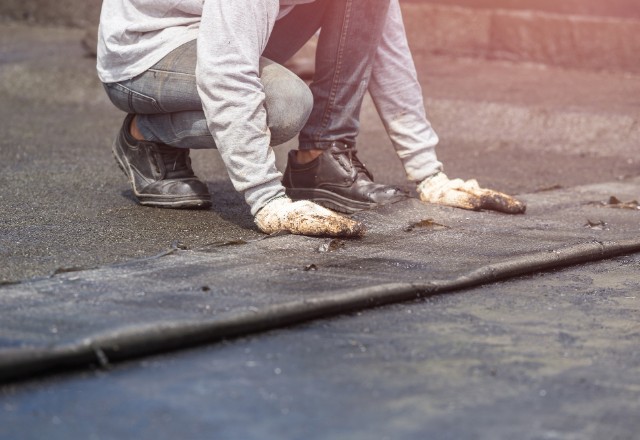
Preparation of the Roof Deck
Proper preparation of the roof deck is essential to ensure the longevity and effectiveness of a built-up roof system. The following steps must be taken to prepare the roof deck for a built-up roof system.
Step 1: Remove Existing Roofing Material
Before installing a new built-up roof system, it is necessary to remove any existing roofing material down to the substrate. Once all the roofing material has been removed, the substrate must be thoroughly cleaned of debris and defects.
Step 2: Inspect the Roof Substrate
The condition of the roof substrate is critical to the success of the built-up roof system. Any defects or damage to the substrate must be repaired before beginning installation. The roof substrate must be smooth, even, and free of any protrusions or sharp points.
Step 3: Install Base Sheet
A base sheet must be installed to provide a layer of separation between the substrate and the built-up roofing system. The base sheet is typically mechanically fastened or adhered to the substrate, depending upon the manufacturer’s instructions.
Step 4: Follow Manufacturer’s Instructions
It is crucial to follow the manufacturer’s instructions when installing the base sheet. Improper installation of the base sheet can lead to failure of the entire built-up roof system.
Step 5: Apply Ultra-Violet Protection Layer
After the base sheet has been installed, an ultra-violet protection layer must be applied to the roof deck. This layer protects the roof deck from the damaging effects of the sun’s ultraviolet rays.
The preparation of the roof deck for a built-up roof system is a multi-step process that requires careful attention to detail. By following these steps, you can ensure that your built-up roof system will provide long-lasting protection for your commercial building.
Applying Hot Asphalt or Cold-Applied Adhesive to the Substrate
Once the base sheet is installed and the ultra-violet protection layer has been applied, it is time to install the first layer of the built-up roof system. This layer can be coal tar, cold applied adhesive or typically hot asphalt.
When applying hot asphalt, it is important to heat it up to the correct temperature to ensure that it is liquid enough to spread smoothly and evenly. The heating process can be done using a specialized machine, which keeps the mixture hot and workable. Once the asphalt is heated to the correct temperature, it is applied to the substrate with a mop or another type of spreader that lays it flat and even across the roofing surface.
Applying cold-applied adhesive to the substrate requires a different set of methods. One of the most common ways is to roll the adhesive out with a trowel or a roller. The advantage of using cold-applied adhesive is that it can be used on lower temperatures and is a safer alternative to hot asphalt.
For optimal roof performance, it is crucial to apply each layer evenly and with level precision, regardless of the application method. This will ensure protection against various weather elements, and each layer should be allowed to dry and cure before moving on to the next.
Applying hot asphalt or cold-applied adhesive to the substrate is a crucial step in the built-up roof installation process. It is important to follow the manufacturer’s instructions carefully to ensure that each layer is applied correctly. By doing so, one can create a durable and long-lasting roofing system that will provide excellent protection for years to come.
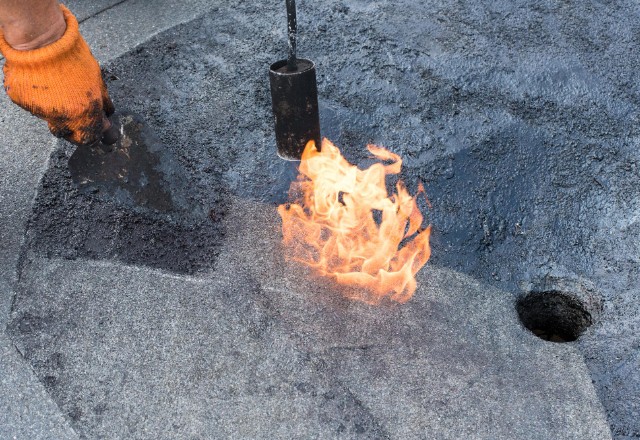
Installing the First Ply Sheet and Asphalt Layer
The installation process of a built-up roof system begins with preparing the roof deck with a smooth and clean surface. Once the substrate is ready, the installation of the first ply sheet and asphalt layer can be initiated.
To start, apply a layer of hot asphalt or cold adhesive to the substrate. The choice of adhesive depends on the specific situation, climate, and requirements.
Next, center the first ply sheet on the roof and roll it out carefully, taking care to avoid any wrinkles or bumps. The ply sheets are typically made from fiberglass or organic material, and they serve as the base layer for the roofing system.
Once the first ply sheet is in place, add a layer of hot asphalt on top of it and use a mop to spread it evenly across the surface. If cold adhesive was used instead, gently roll it out with a trowel or a roller.
It is crucial to press down firmly at the edges and overlaps to ensure a proper seal. Any gaps or bubbles in the adhesive can compromise the effectiveness of the roofing system.
Repeat the process two to three times until the first layer is complete. Layering is critical to a built-up roof system, as it adds tensile strength, protection, and durability to the roof.
Installing the first ply sheet and asphalt layer involves applying hot asphalt or cold adhesive to the substrate, centering the first ply sheet, adding a layer of hot asphalt, and repeating the process to complete the first layer of the roofing system. It is crucial to follow the process carefully to ensure a sealed and robust roof substrate.
Installing Additional Layers of Asphalt and Ply Sheets as Needed
To finish a built-up roof system, additional layers of asphalt and ply sheets are needed to increase its durability and protection against the elements. Here are the steps to follow when installing these layers:
- Apply a layer of hot asphalt or cold adhesive to the substrate. Ensure that it is spread evenly, and there are no areas left uncoated.
- Center the first ply sheet on top of the layer of hot asphalt or cold adhesive. Roll it out carefully to avoid wrinkles or bumps. Press down firmly at the edges and overlaps to ensure a proper seal.
- Apply another layer of hot asphalt or cold adhesive on top of the first ply sheet. Again, ensure that it is spread evenly.
- Place the second ply sheet on top of the layer of hot asphalt or cold adhesive. Stagger the seams of the second ply sheet with the seams of the first ply sheet to increase its tensile strength. Press down firmly at the edges and overlaps to ensure a proper seal.
- Repeat the process by adding alternating layers of asphalt and ply sheets until there are three to four complete layers of each.
- Ensure that each layer is properly mopped down to create an even surface and proper adhesion.
- When installing additional layers of ply sheets, stagger the seams to create a crisscrossing pattern. This will strengthen the roof and minimize the risk of water damage or leaks.
By following these steps, you can install additional layers of asphalt and ply sheets as needed to complete a built-up roof system. This will create a long-lasting, durable, and energy-efficient roof that can withstand any weather conditions.
Maintenance for a Built-up Roof System
Maintaining a built-up roof system is crucial for its longevity and effectiveness. With proper upkeep, the layers of bitumen and ply sheets can provide long-lasting protection against the elements, reducing the risk of leaks or water damage. Here are some essential maintenance practices to keep your built-up roof in top condition.
Inspecting for Leaks and Damage Regularly
A built-up roof system is a roofing material commonly used on commercial properties due to its energy efficiency and long-lasting protection against water damage. To maintain the effectiveness of a built-up roof system, regular inspections are necessary to identify potential leaks and damages.
To perform a regular inspection, start by examining the roof surface for any visible damages such as cracks, blisters, or tears. Pay special attention to areas where water may accumulate, such as around drains or at flashings. These areas are prone to leaks and may require additional attention.
It is also important to look for pools of water on the surface of the roof, which may indicate a more significant issue. Standing water can put more pressure on the roof substrate and cause more problems in the future.
For more thorough inspections, the use of moisture sensors can be a useful tool in detecting trapped water within the layers of the roof system. These sensors can identify any moisture that may be trapped between the layers or beneath the roof membrane, which can lead to more serious issues such as rot or mold.
Regular inspections can help to prevent significant damages and save costs in the long term. Schedule routine inspections by a professional roofing contractor to ensure that potential issues are identified and fixed before they become serious problems. By inspecting for leaks, visible damages, water accumulation, and utilizing moisture sensors, you can ensure that your built-up roof system lasts for years to come.
Conclusion
A built-up roof system can be a viable option for commercial properties due to its durability and long-lasting protection against water damage. However, it is important to note that this roofing system may not be the best choice for all commercial properties, especially those that prioritize safety concerns and high energy efficiency.
Built-up roofs are made up of layers of bitumen, ply sheets, and protective surfacing such as gravel or mineral granules. The types of bitumen used can vary and include hot asphalt, coal tar, and modified bitumen, among others. While this roofing system offers minimal upkeep, routine maintenance is still crucial in ensuring its effectiveness.
Regular inspections should be conducted to identify potential leaks and damages to prevent more significant issues such as rot or mold. Moisture sensors can also be used to detect any trapped moisture within the layers of the roof system.
A built-up roof system can be a reliable and long-lasting option for commercial properties. However, it is important to weigh the benefits and drawbacks to determine if it is the best option for a particular property. If considering a built-up roof system, regular maintenance and inspections should be prioritized to ensure its longevity and effectiveness.



 509-201-4190
509-201-4190
